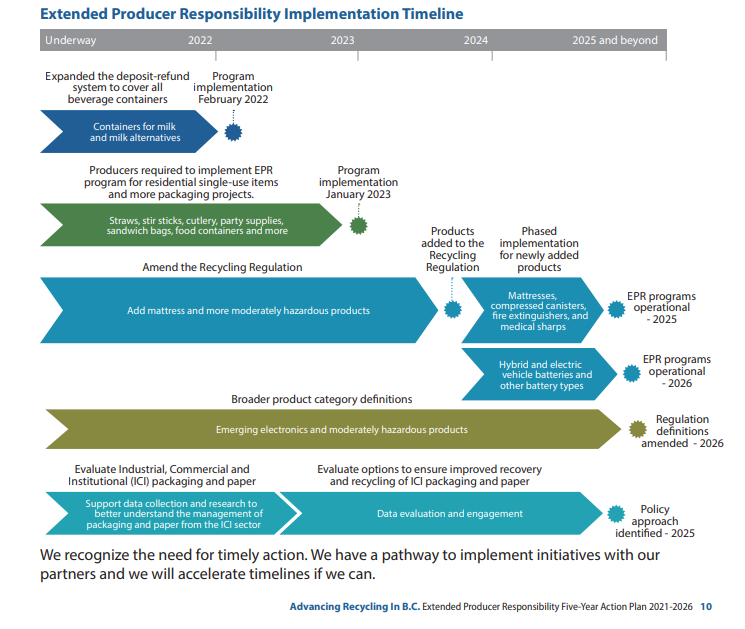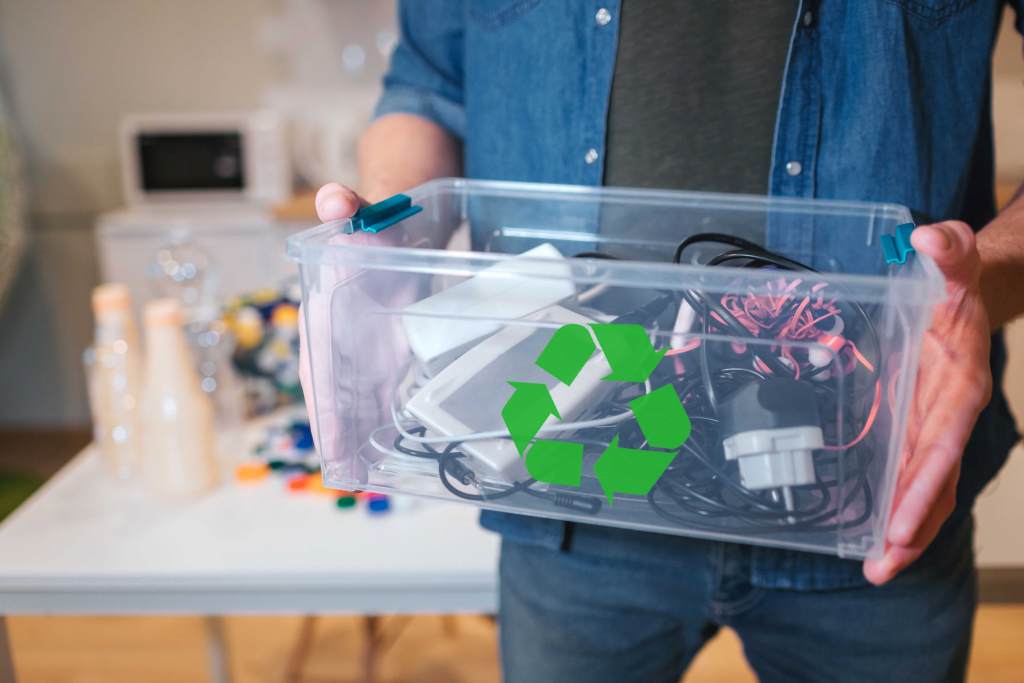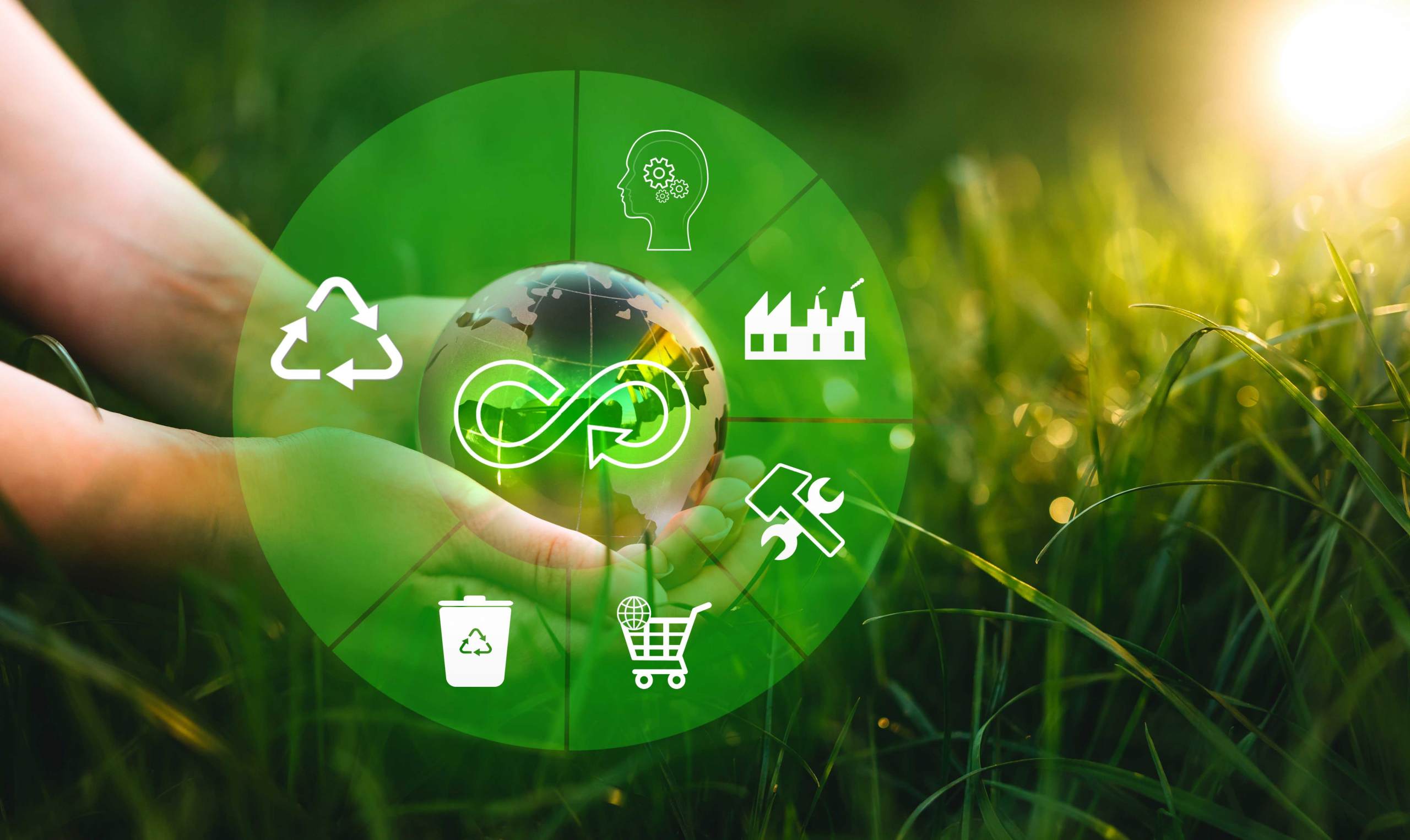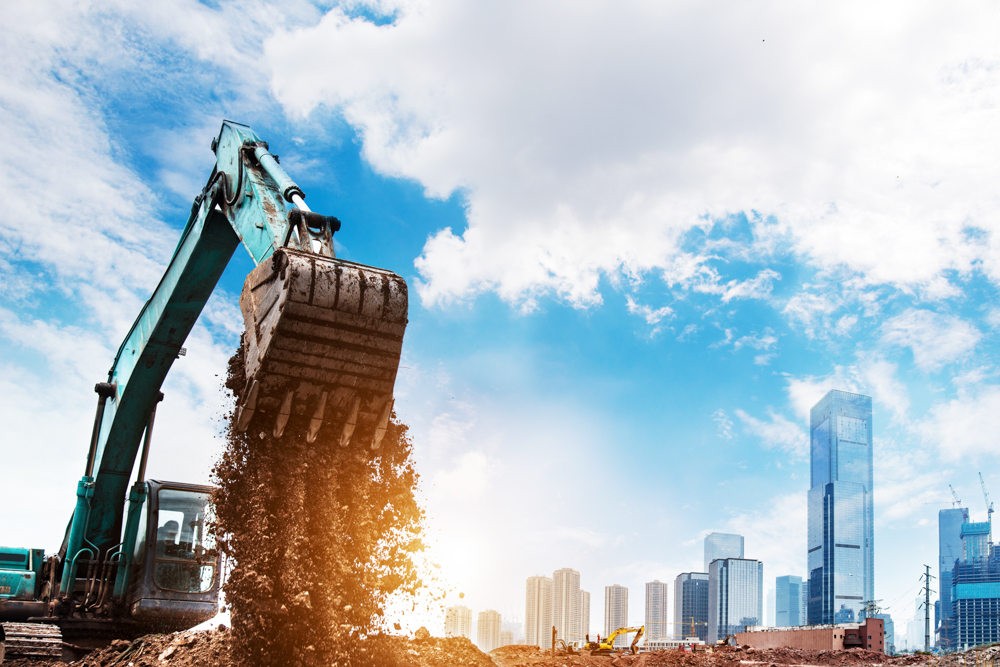In a circular economy, producers are responsible for recovering the products they manufacture. This shift in responsibility happens in several provinces across Canada to establish a more sustainable waste stream. Rather than dumping products into landfills, producers will have to recycle or reuse them, reducing the amount of waste in our landfills and moving us closer to a circular economy.
The circular economy is a system that operates with little to no waste but with a target of zero waste. Producers are responsible for collecting their products to recycle or reuse them at the end of life, rather than consumers disposing of these items as garbage into landfills. This circular economy model shifts the cost from municipalities back onto producers where it belongs and creates incentives for manufacturers to make greener choices.
Recycling is a crucial component of a circular economy. Unlike waste management, which falls to local and Indigenous governments to deliver collection services to their citizens (think garbage), producers of goods organize and operate comprehensive province-wide recycling systems that keep materials in use. These systems help drive one of the essential elements necessary for creating a circular economy.
This blog post will go through the latest changes and shifts to producer-driven product recovery in each province adjusting their regulations and programs to promote a circular economy.
Alberta’s Bill 83
Bill 83 in Alberta creates a local solution to eliminate waste from landfills while shifting the cost of recycling garbage onto those who generate it. “Alberta sends about 1,034 kg per person of waste annually to landfills – more than any other Canadian jurisdiction. The national average is 710 kg.” Statistics from alberta.ca
Bill 83: The Environmental Protection and Enhancement Amendment Act (December 2, 2021) will bring Alberta closer to other Canadian jurisdictions such as British Columbia, which is also ramping up a program in place since 2006. Producers and retailers of consumer products, not taxpayers, will fund the new program.
The most significant changes to the bill will allow for the creation of effective and efficient producer-run provincial recycling systems for single-use plastics, packaging, and paper products, as well as hazardous and unusual items.
The purpose of this proposed rule would be to improve the government’s efficiency and flexibility by putting collection and recovery standards in regulation rather than statute. The regulations will allow material producers to design waste collection and recovery systems that are appropriate for their specific needs while still achieving performance benchmarks and expectations and ensuring that regulatory requirements are reasonable and enforceable.
for more information on Alberta’s regulations, go to https://www.alberta.ca/improving-albertas-waste-management.aspx
British Colombia’s Five-Year Action Plan

Over the last 50 years, British Columbia (B.C.) has developed a more efficient method of dealing with waste. This call to action has led to the implementation of province-wide recycling programs and a deposit and refund system, known as Extended Producer Responsibility (EPR).
The EPR initiative responds to consumer demands for reducing or eliminating waste. B.C.’s EPR initiative states that producers (manufacturers, distributors, and retailers) of designated goods must be held accountable for the lifecycle of their items, including collection and recycling. This moves responsibility from local and indigenous authorities to manufacturers and purchasers of packaging, paper, and commodities.
The current program is being expanded to include hybrid and electric vehicle batteries and other battery types. Mattresses and foundations Compressed canisters, such as single-use camping fuel and fire extinguishers Medical sharps for domestic usage. By classifying items, it’s possible to identify more moderately hazardous goods and emerging electronics.
To read the entire report go here
Ontario continues to expand The Resource Productivity and Recovery Authority
The Resource Productivity and Recovery Authority (RRCEA) was established in 2016 by the RRCEA to oversee businesses and verify their adherence to Individual Producer Responsibility (IRP) demands. Producers of goods and packaging are required by law to meet stringent, enforceable targets for the recovery and recycling of their goods and packaging.
Producers have a choice in how they meet their needs with IPR. They can either collect and recycle their products and packaging or hire producer responsibility organizations (PROs) to assist them. The Authority can conduct inspections and issue compliance orders. Producers must register with the Authority and report on their progress toward achieving these targets.

Beginning in January 2023, lighting equipment will transition to the program. And lastly, Blue Box will transition between July 1, 2023, and December 31, 2025. Because of the strict standards that were originally implemented, some modifications have been made to the program. The Red Tape Reduction package was introduced in the fall of 2021 to address these modifications. These changes were designed to reduce needless administrative requirements for the tire, battery, and electrical and electronic equipment industries while also assuring that people and the environment are safeguarded.
For more information on the RRCEA and Ontario’s programs, check out https://rpra.ca/about-us/the-circular-economy/ or https://ero.ontario.ca/notice/019-4656
Quebec drafts regulations to establish a circular economy
The extension of producer responsibility (EPR) methods, along with the modernization of the deposit and selective collection (better known as Packaging and Printed Paper (PPP) collection) systems, will allow for greater container salvage and recycling. The reform will also increase Quebec’s environmental performance and promote the circular economy.
A new draft regulation has been published, which sets out to have private entities recover products to establish a circular economy in Quebec. The regulation sets out a minimum recovery rate and adds additional items that can be recovered/recycled, including agricultural products, pressurized fuel containers, and pharmaceuticals.
The new regulations are slated to take approximately three years to roll out. The next benchmark will be in December of 2022, when the rollout of the deposit-return system comes into effect. The beginning of the new bottle deposit system broadened to include all beverage containers from 100 ml up to and including 2 L and rollout of the new network of return points. By 2025 Quebec will be entirely on the new system, which will be an EPR-based modernized selective collection system. Read more about Quebec’s program at http://www2.publicationsduquebec.gouv.qc.ca/dynamicSearch/telecharge.php?type=1&file=105312.pdf
The long term goals of shifting to an EPR-based system
The EPR approach to recycling is a producer-oriented technique that aims to minimize waste by enhancing recycling and reducing dependence on new raw materials. EPR shifts the cost of managing post-use goods from local governments to the producing sector, in part or entirely.
It’s built on the idea that polluters should pay, so waste generators are held responsible for recycling and disposal of their trash. Asking the industry to return items at the conclusion of a product’s life encourages manufacturers to create products that are more reusable. It motivates designers to develop designs that increase recyclability while minimizing the harm caused by goods.
Several provinces have started, or are planning to, shift the responsibility of product recovery for certain products to the producers of those products. The general intent is to establish a circular economy where producers recover the products they manufacture with the intent to shift waste streams away from landfills and into recycling or reuse. By beginning the shift to a circular economy, we can begin to make the waste-free goals of the future a reality.
About this Regulatory Change Summary
Refined Data has partnered with Premier Environmental Services for more than a decade to identify and share relevant environmental and health and safety regulation changes with our clients. Please contact us for more information on this and other regulatory updates.

